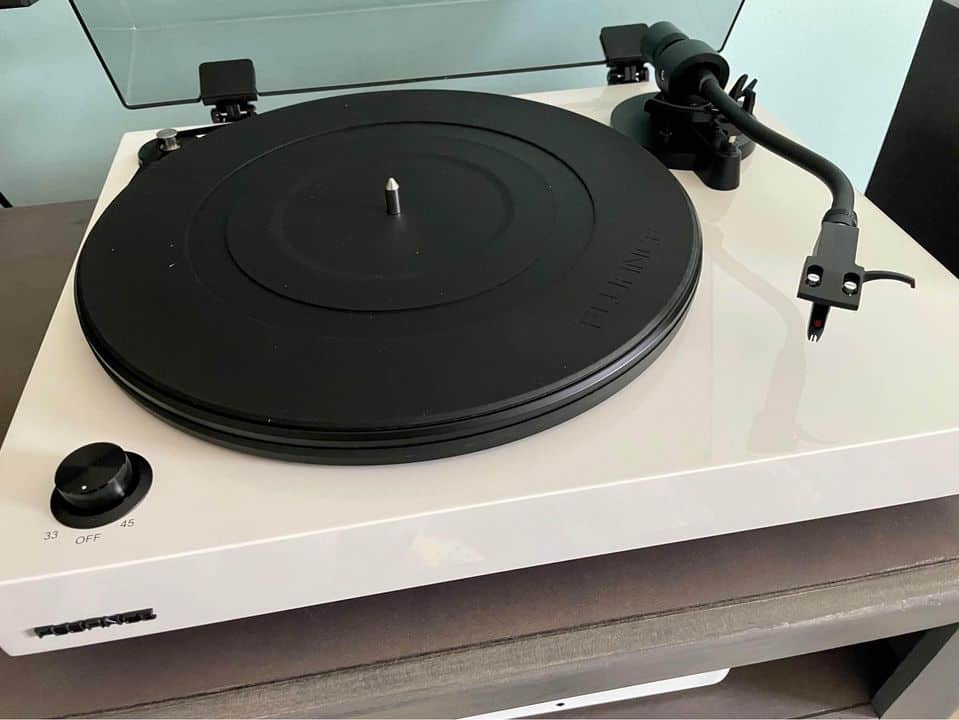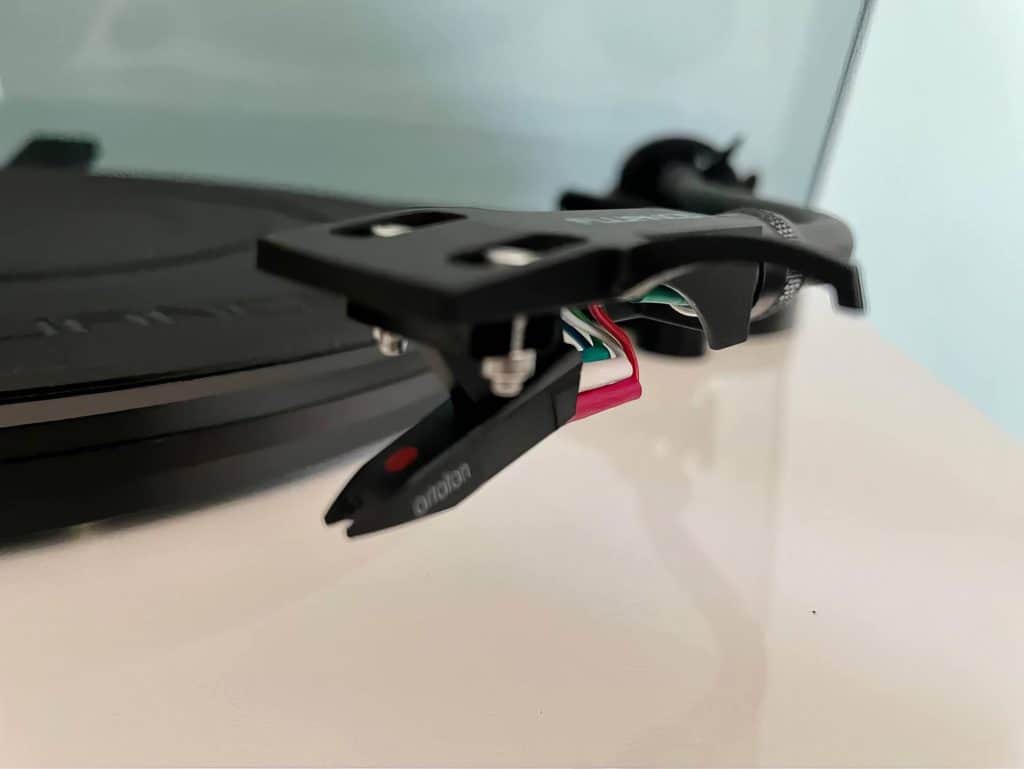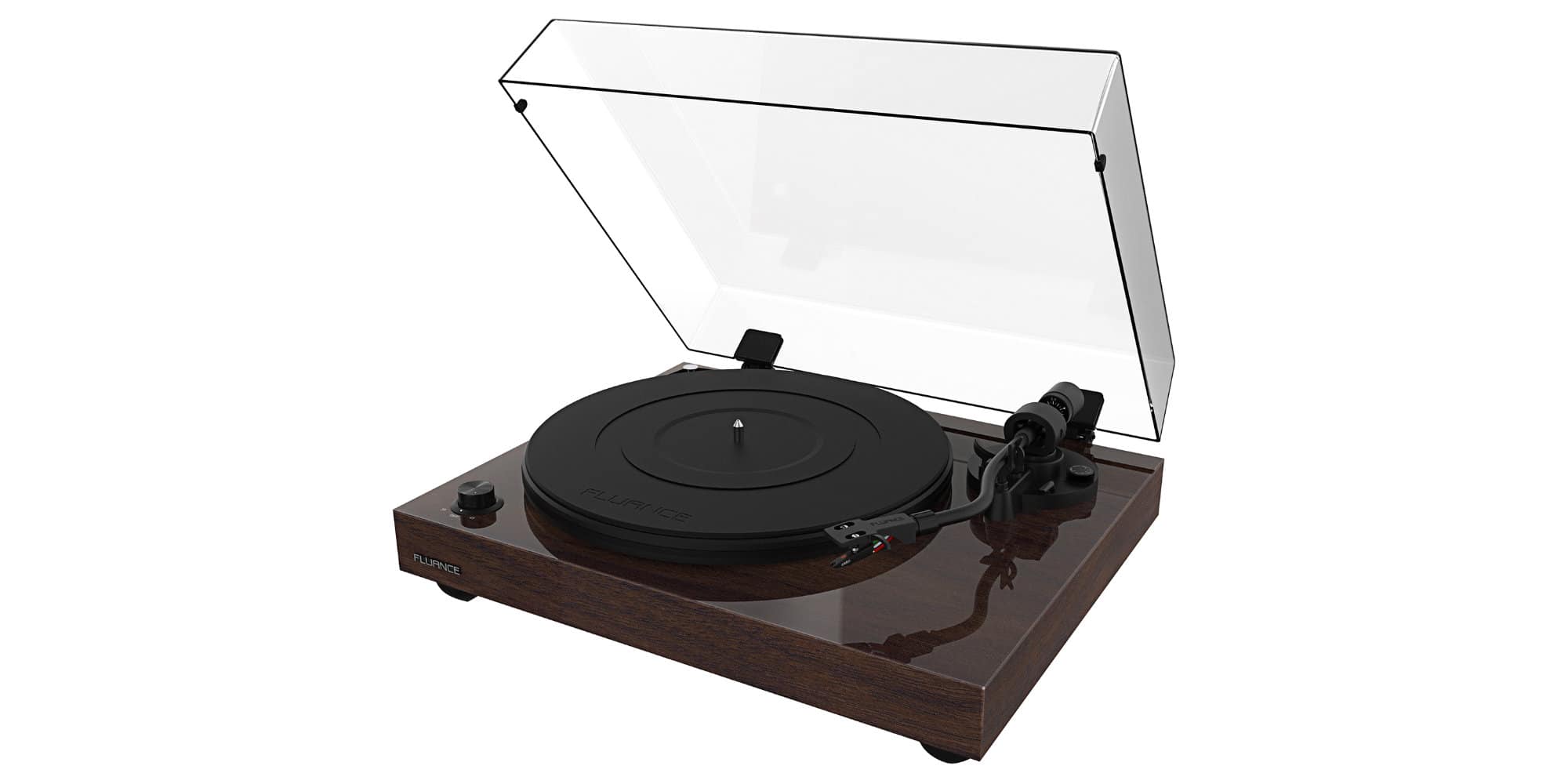The vinyl resurgence shows no signs of slowing down as music lovers young and old discover (or re-discover) the unparalleled sound quality and analog warmth that LPs can deliver. As interest in record collecting soars, so too does demand for quality hi-fi turntables that can coax the most fidelity from those spiraling grooves.
One model that has been generating considerable buzz among budget-minded audiophiles is the Fluance RT82. As the next model up in Fluance’s Reference Series of turntables, the RT82 promises audiophile-quality construction and components at a relatively accessible price point. Fluance has earned a reputation for delivering impressive performance and value, especially among entry-level vinyl enthusiasts. But can the RT82 live up to expectations and justify its positioning among fierce competition in the sub-$500 segment?
In this review, we’ll take an in-depth look at the RT82’s design and specs. We’ll assess what you can expect in terms of set-up, ease of use, sonic performance and overall value at its retail price of $299.
Key Takeaways
- The Fluance RT82 is a well-crafted turntable that focuses on high-fidelity audio.
- It requires some effort in setup to integrate with the rest of the sound system.
- While not the most feature-rich, its performance justifies the investment for vinyl aficionados.

Design and Build Quality
Fluance has crafted the RT82 with an eye toward quality, selecting mostly solid hardwood materials like walnut for the plinth. The MDF used is also higher density than average, providing mass that helps dampen vibrations.
Materials Used
The Fluance RT82 flaunts a solidly crafted wooden plinth, available in finishes such as natural walnut and piano black, appealing to those who appreciate a classic look. The aluminum tonearm and acrylic platter underscore the turntable’s durability and commitment to quality. Accompanying these is a rubber mat that provides an additional layer of record protection.
Turntable Construction
The RT82 is belt-driven, a trait that aids in reducing motor noise and vibration. The balanced S-shaped tonearm, which many high-fidelity turntables adopt, is accurately balanced, enhancing the tracking of the stylus on vinyl records. This careful assembly ensures a sound delivery that’s both precise and nuanced.
Design Aesthetics
The design of the Fluance RT82 resonates with an understated elegance. Its construction favors clean lines and minimalism, without unnecessary ornamentation. It’s evident that the company emphasizes both form and function, offering a protective dust cover to preserve the turntable’s integrity. The aluminum platter not only contributes to the device’s performance but also adds a sleek edge to its overall appearance.
Setup and Initial Impressions
The setup process is straightforward and the out-of-the-box sound quality was impressive. The clear manual and the included accessories such as a bubble level ensure an easy installation.
Installation Process
The RT82’s manual was comprehensive, guiding me through each step of the installation. Unboxing was a breeze, and within the package, I found a helpful bubble level to ensure the turntable was perfectly balanced—a crucial step for optimal playback. The adjustable feet made it simple to achieve this balance even on surfaces that were not completely flat.
First Use and Setup
Once the RT82 was levelled, my first test run was smooth. The clarity of the sound was immediately evident, confirming the turntable’s robust construction and the quality of its components. Connecting the turntable to my existing audio system required an external preamp, as the RT82 does not feature a built-in preamplifier, but the connections were quite simple and well-documented in the manual.

Performance and Sound Quality
The Fluance RT82 delivers an exceptional audio experience for its price. This is primarily attributed to its high-quality cartridge, stable playback speed, and robust sound performance.
Cartridge Characteristics
The Fluance RT82 is equipped with an Ortofon OM 10 cartridge, which is a notable boost from the Audio-Technica AT95E found in the RT81. The OM 10 is known for its precision and clarity, offering a well-defined stereo image that appeals to audiophiles. Its ability to accurately reproduce sound without adding unwanted coloration is a testament to its high fidelity.
- Cartridge Model: Ortofon OM 10
- Stylus: Elliptical
- Tracking Force: Optimal at 1.5 g
- Frequency Response: Wide range, emphasizing accuracy over embellishment
Sound Performance
Bass response is articulate without being overbearing, allowing for a balanced mix that does not overwhelm the midrange and high frequencies. The music playback showcases a richness and depth that brings recordings to life, indicating the turntable’s high-fidelity playback capability.
- Bass: Articulate; well-controlled
- Midrange: Clear; resonant
- Highs: Crisp without harshness
- Overall Sound Quality: Balanced; authentic
Turntable Speed and Stability
The RT82 maintains rotational speed with remarkable precision thanks to its well-engineered motor and speed control mechanism. It can handle both 33 ⅓ and 45 rpm without issue, minimizing speed-related pitch variations and resonance. Its stable performance ensures a consistent and enjoyable listening experience.
- Speed Options: 33 ⅓ rpm, 45 rpm
- Speed Control System: Precision servo
- Anti-Skate Mechanism: Reliable
Features and Innovations
Speed Control System
The aluminum speed control knob is a key component in ensuring accurate playback speeds. Being a belt-driven turntable, the RT82 operates with a rubber belt which contributes to consistent speed control. Not only does the turntable support the common 33 and 45 RPM speeds, it manages these with precision due to the isolated motor which diminishes interference from other components.
Vibration and Resonance Prevention
A significant strength of Fluance’s RT82 is its attention to minimizing vibrations which can affect sound quality. This turntable employs an isolation system made for the motor to mitigate unwanted noise or resonance. Equipped with an Ortofon OM 10 cartridge, which is known for its remarkable balance and detailed sound reproduction, the RT82 maintains stability in sound output. Also worth noting is the S-shaped tonearm, engineered to prevent distortion and improve sound quality.
Comparison with Fluance RT81 and RT82
One of the most logical questions for vinyl enthusiasts interested in the Fluance lineup is how the RT82 differs from its little sibling – the RT81. As the numerical naming indicates, the RT82 is viewed as a step up from the $50 cheaper RT81 in terms of both components and resulting sound fidelity. But where does that extra Jackson actually get invested by Fluance?
In terms of appearance and base construction, the tables are nearly identical – featuring the same wooden plinth, aluminum feet, and clean aesthetic lines. Lift their hoods though and some differences emerge. The first is in the motors – the RT82 utilizes a high-torque servo motor which enables more precise speed accuracy and stability. This is an important upgrade when trying to extract the most quality from vinyl’s analog grooves.
The other big distinction is the inclusion of an Ortofon OM 10 cartridge and elliptical stylus on the RT82 versus the default conical cartridge and stylus equipped on the RT81. The ability to trace finer detail in the record is noticeable here during A/B testing of the same albums. The richer harmonic textures and fuller bass response give the RT82 a welcome sonic edge.
For some, the ability to later swap out to even higher-end cartridges will also appeal when considering a baseline investment. Beyond the improved motor control and cartridge though, the tonearms, platters and other construction details remain very comparable. So while the upgrades are certainly worthwhile to ear, budget-focused buyers wouldn’t be shortchanging themselves terribly by opting for overall excellent value of the RT81. Just expect to crave some future cartridge experimentation.
Verdict
When the dust settled on my testing, the Fluance RT82 made a compelling case for itself as a leading turntable option under $300. It combines the analog richness and tactile appeal that vinyl lovers crave with the convenience and reliability that younger generations demand. Rest assured newbies – no need for a doctorate in engineering to operate this user-friendly deck thanks to clear labeling, easy counterweight adjustment, and inbuilt preamp option.
Yet Fluance still catered nicely to sophisticated audiophiles through thoughtful engineering that minimized vibrations alongside component choices like the speed-accurate motor and Ortofon OM 10 cartridge. The resulting performance achieved that elusive balance of tonal accuracy, soundstage imaging, and musicality – hitting the audio sweet spot for indulging in both high-fidelity classical and three chord punk.
Sure, spending upwards of $100 more could unlock even more micro-detail, transient response and bass impact from pricier competitors. But as an overall package under $300, the RT82 punches far above its weight. I walked away mighty impressed by how refined Fluance made the analog experience for the cost. For vinyl enthusiasts searching for their maiden turntable or upgrading from lower-quality starters, the RT82 warrants top-three shortlist consideration. Its compelling versatility, design and most importantly audio finesse capture why it’s worth catching the spinning black disc fever again.

